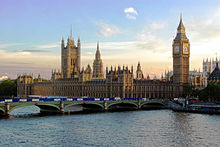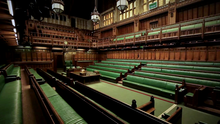| This article needs additional citations for verification. Please help improve this article by adding citations to reliable sources. Unsourced material may be challenged and removed. Find sources: "Legislative chamber" – news · newspapers · books · scholar · JSTOR (June 2013) (Learn how and when to remove this message) |

| Legislature |
|---|
| Chambers |
| Parliament |
| Parliamentary procedure |
| Types |
|
| Legislatures by country |
| Part of the Politics series |
| Politics |
|---|
| Primary topics |
| Political systems |
| Academic disciplines |
Public administration
|
| Policy |
| Government branches |
| Related topics |
| Subseries |
|
|
A legislative chamber or house is a deliberative assembly within a legislature which generally meets and votes separately from the legislature's other chambers. Legislatures are usually unicameral, consisting of only one chamber, or bicameral, consisting of two, but there are rare examples of tricameral and tetracameral legislatures. The Socialist Federal Republic of Yugoslavia is the only country documented as having a pentacameral (later hexacameral) legislature.
Bicameralism
Main article: Bicameralism
In a bicameral legislature, the two bodies are often referred to as an upper and a lower house, where the latter is often regarded as more particularly the representatives of the people. The lower house is almost always the originator of legislation, and the upper house is the body that offers the "second look" and decides whether to veto or approve the bills. In the United Kingdom legislation can be originated in either house, but the lower house can ultimately prevail if the two houses repeatedly disagree. In most countries the lower house also has sole or predominant control over matters to do with finance and taxation.
A parliament's lower house is usually composed of at least 100 members, in countries with populations of over 3 million. The number of seats rarely exceeds 400, even in very large countries. Among the countries with large lower houses are France, where the National Assembly has 577 members, and Japan, where the House of Representatives has 475 members. The upper house of a parliament customarily has anywhere from 20 to 200 seats, but almost always significantly fewer than the lower house. In the United Kingdom however, the lower house (the House of Commons) has 650 members, but the upper house (the House of Lords) currently has slightly more members than the lower house, and at one time (before the exclusion of most of the hereditary peers) had considerably more.
Merging of chambers
Further information: List of abolished upper housesUntil 1953, the Rigsdag in Denmark was divided into two houses, the "Folketing" and "Landsting", but has since become a unicameral legislature. The same goes with Sweden, and its "Riksdag" until 1971. The Norwegian parliament (Storting) was officially divided in two chambers 1814–2009, but functioned as a single chamber in practice, a situation called Qualified unicameralism.
Floor and committee
| This section needs expansion. You can help by adding to it. (June 2008) |
The floor is the name for the full assembly, and a committee is a small deliberative assembly that is usually subordinate to the floor. In the United Kingdom, either chamber may opt to take some business such as detailed consideration of a Bill on the Floor of the House instead of in Committee.
Security
The building that houses the Chambers of a Parliament is usually equipped with an internal police and in some, the public force is not allowed access without authorisation.
See also
References
- Legislative Organization & Procedures. The National Conference of State Legislatures. www.ncsl.org. Retrieved June 29, 2013.
- UK Parliament Glossary, http://www.parliament.uk/site-information/glossary/floor-of-the-house/, accessed 1 July 2015
- Under the responsibility of the Usher of the black rod, in Westminster-style Parliaments.
- In Italy the judge could raise conflict of powers against the House asking the Constitutional Court - in accordance with decision no. 120/2014 - for access to the Palace to perform his duties: Buonomo, Giampiero (2014). "Il diritto pretorio sull'autodichia, tra resistenze e desistenze". Forum di Quaderni Costituzionale. Archived from the original on 2012-08-01. Retrieved 2016-04-12.